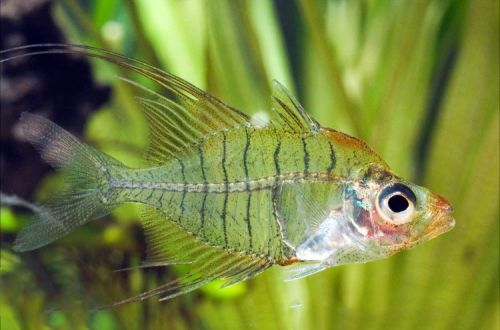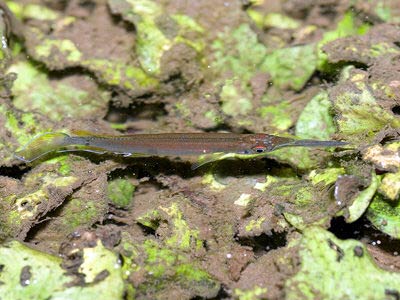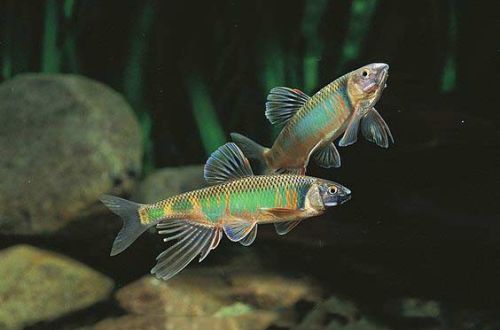
glass angel
Fish “Glass Angel” or Filamentous Glass Perch, scientific name Gymnochanda filamentosa, belongs to the family Ambassidae (Glass perches). The name speaks for itself and indicates the main distinguishing feature of this fish is its appearance. Not the easiest to keep and requires careful selection of tankmates, so not recommended for beginners.

Contents
Habitat
It originates from Southeast Asia in the river systems of the peninsular part of Malaysia and on the island of Kalimantan (Born) in the Kapuas river basin. Inhabits peat bogs and swampy areas of rivers with slow flow or stagnant water, overgrown with aquatic vegetation. The bottom is silted up and littered with plant remains, snags, during the decomposition of which tannins are formed, giving the water a brown tint and corresponding chemical composition.
Brief information:
- The volume of the aquarium – from 100 liters.
- Temperature – 20-28°C
- Value pH — 4.0–6.0
- Water hardness – 1–5 dGH
- Substrate type – any soft
- Lighting – subdued
- Brackish water – no
- Water movement – little or no
- The size of the fish is about 3 cm.
- Food – any food
- Temperament – peaceful
- Keeping in a flock of 8-10 individuals
Description
Adults reach a length of about 3 cm. The fish has a high body, a massive head with large eyes and long filiform dorsal and anal fins in males. The females have short fins. The integuments are so transparent that internal organs and the spine can be seen through them. The head has a reddish hue, and rows of vertical dark stripes are noticeable on the body.
Food
Omnivorous species. Acclimatized or captive-bred fish will accept most of the popular foods in the aquarium trade in dry, frozen or live form.
Maintenance and care, arrangement of the aquarium
The optimal size of an aquarium for a flock of 8-10 fish starts from 100 liters. The design uses a large number of aquatic plants, including floating ones, driftwood and other decorative elements that can provide shelter.
Additionally, dried leaves of some trees are used, which cover the bottom. They serve not only as part of the design, but also contribute to giving the water a hydrochemical composition characteristic of natural reservoirs, due to the release of tannins. Read more in the article “Which tree leaves can be used in an aquarium.”
The glass angel fish is susceptible to fluctuations in pH and dGH values, which are in a rather narrow acceptable range. Ensuring a stable aquatic environment is a top priority. To this end, along with the installation of the necessary equipment, regular aquarium maintenance procedures are carried out, weekly replacement of part of the water with fresh water, etc. When choosing a filter, it is worth giving preference to models that do not cause excessive flow, in some cases a few simple airlift filters will do. with sponge as filter material.
Behavior and Compatibility
A peaceful schooling fish that prefers to be in the community of its relatives, numbering at least 8-10 individuals. In their natural habitat, they do not encounter overly active and large fish, so they will experience great stress if they meet in a closed aquarium with similar species. Compatible only with calm fish of a similar size.
Breeding / breeding
At the time of this writing, there have been no successful cases of breeding “Glass Angel” in a home amateur aquarium. Supplied for export either by means of catch from the wild or from commercial fish farms.
Fish diseases
The cause of most diseases is unsuitable conditions of detention. A stable habitat will be the key to successful keeping. In the event of symptoms of the disease, first of all, the quality of the water should be checked and, if deviations are found, measures should be taken to correct the situation. If symptoms persist or even worsen, medical treatment will be required. Read more about symptoms and treatments in the Aquarium Fish Diseases section.





